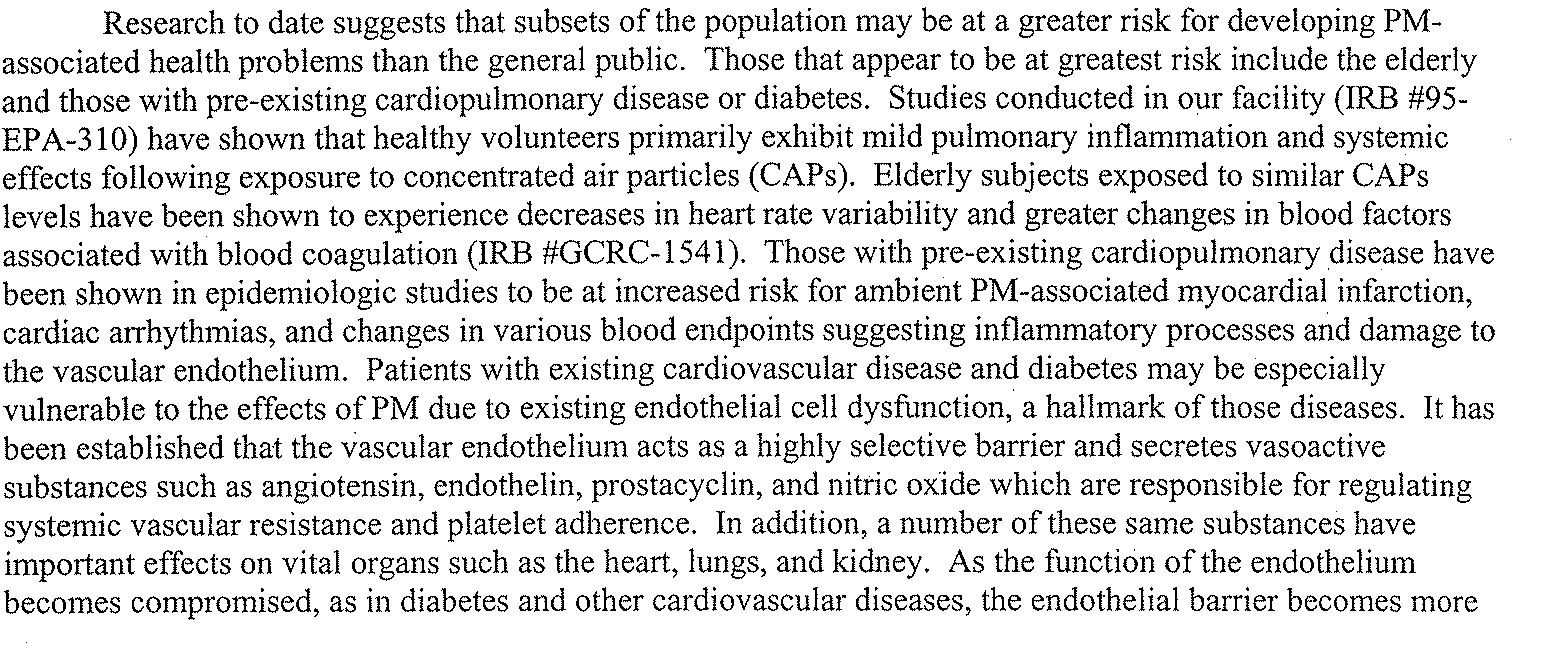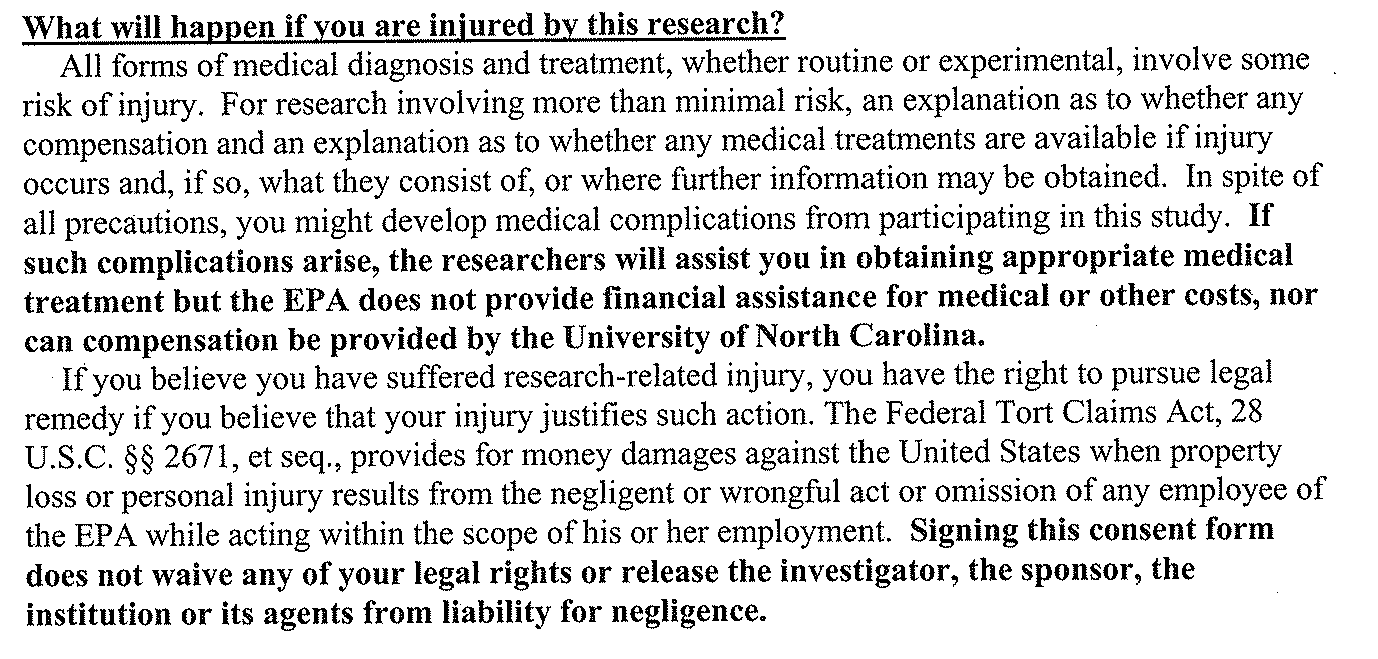EPA told its University of North Carolina institutional review board from the beginning that PM2.5 was ultrahazardous as shown in the excerpts from this April 2004 application for IRB approval of exposing adults with metabolic syndrome to PM2.5 [Click to enlarge the image]:
Among other things, the EPA stated that it believes breathing PM2.5 causes harm below the standards already set by the agency:
That sentence also means that the EPA knows of no safe exposure to PM2.5.
EPA goes on to state [Click image to enlarge]:
So not only does the EPA believe that PM2.5 is harmful, but it believes that certain subpopulations are more vulnerable to harmful effects, including the elderly and those with metabolic syndrome. Note the risk of heart attack for the elderly subpopulation:
To how much PM2.5 will study subjects be exposed?
First, here’s what EPA says about typical exposures to PM2.5 in the UNC-Chapel Hill area where the study subjects come from:
Here’s the anticipated exposure range:
Keep in mind that under the Common Rule, human subjects may not be exposed to more than “minimal risk” without obtaining some other benefit.
This document also documents the misleading use of the term “ultrafine particles.”
In the application, the EPA says [Click image to enlarge]:
So what EPA labels as “ultrafine” particles for the IRB also include PM2.5 to an unknown extent.
Additionally, EPA defines PM2.5 and ultrafine particles on its web site as follows:
Fine PM consists of particles with a diameter less than 2.5 μm and can be inhaled deeply into the lungs.
Ultrafine particles, the smallest, consist of particles with a diameter smaller than 0.1 μm and have widespread deposition within the respiratory tract.
Why is EPA risking the lives and health of its study vulnerable subjects? Because EPA is curious about the health effects of PM2.5.
EPA drives that point home below [Click images to enlarge]:
Of course, these study subjects are risking their lives and health for just EPA science alone. They’re earning $12 per hour up to a maximum of $1,095. Cha-ching!
For study subjects injured by the research, EPA does explain their legal options — but this will change (and for the worse) as time goes on!








